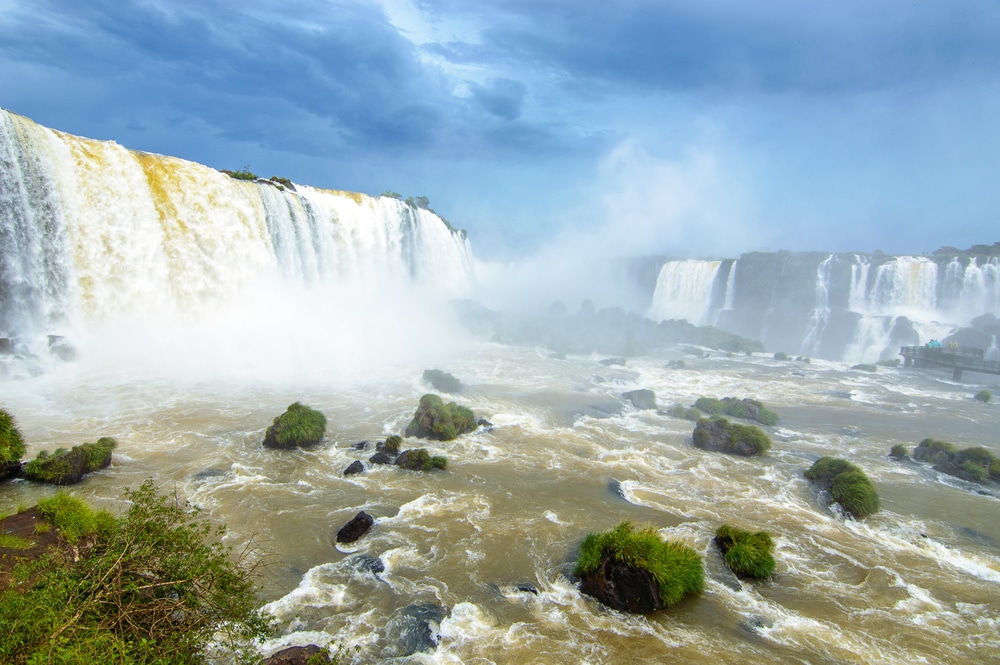
After a year and a half of neglecting the majestic cascades of Iguazú, I decided it was time to explore this part of the world, especially since they are taller and wider than Niagra Falls. Discovering every inch I possibly can comes with the territory of being a travel blogger, and I was growing tired of my resounding answer of “no” when asked by locals and tourists alike if I’d seen the waterfalls yet. ALRIGHT I’M GOING. Calm down. My bags are packed, I’m ready to go.
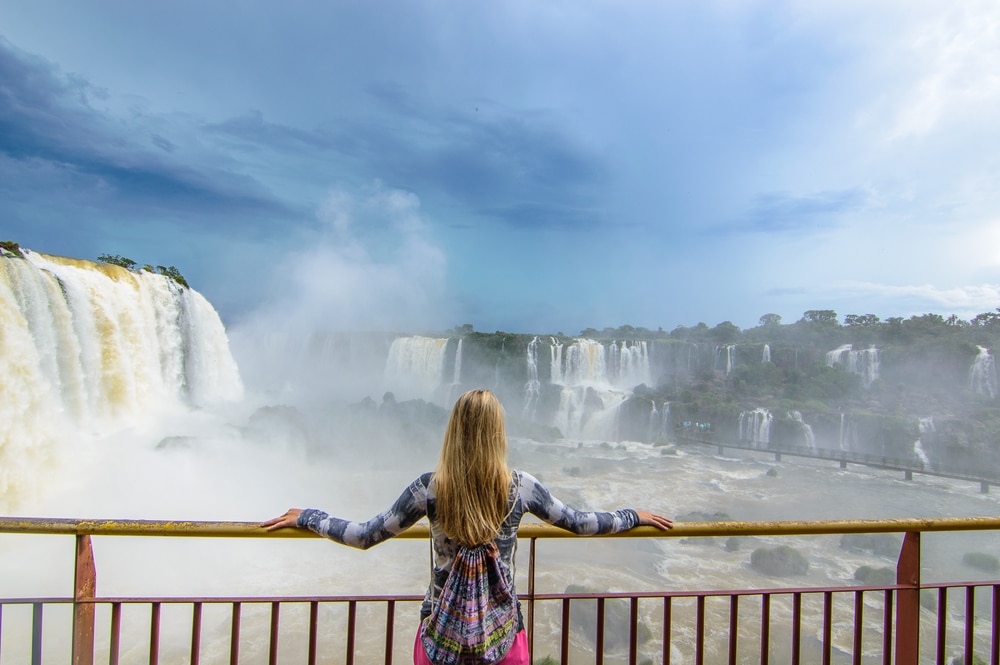
The Argentina Side: Cataratas del Iguazú
Because the falls border both Argentina and Brazil, there are two sides from which to view the falls. The Argentina side is much larger, making up 80% of the falls. There, you’ll find a lower deck, an upper deck, a trail to an island and the ever-so-popular Devil’s Throat. The platforms and observation decks are impressive objects, unobtrusive and built into the landscape. Made of steel and wood, some hang directly over the running water tumbling over the plateau’s edge. If you were to fall over, you’d be no more significant than a drop of water yourself. Stand on a platform built near one of the 300 falls that make up Iguazú and have a nice mid-day shower with 100 of your closest touristy friends. The attraction could double as a water park if you so please.
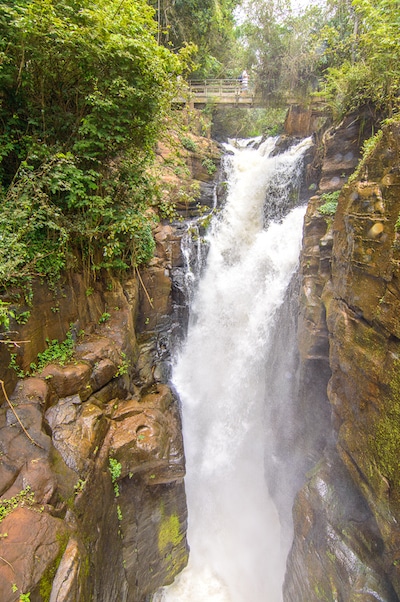
Along the trails you’ll most definitely run into some not so friendly creatures known as coatis. Part raccoon and part anteater, these animals like to travel in packs of 6, 7, 8, or however many they damn well please. They bite, steal food and can get somewhat aggressive. Not having a plethora of information on the rodents before venturing into the forest, I ran into them about 5 minutes into the hike. Seeing me didn’t phase them in the slightest, but I was contemplating jumping on top of the railing to avoid ugly confrontation. I tried to act cool, but I think I ended up holding my breath, turning my head and bracing for impact. In the end, I survived and lived to tell the tale. Just don’t touch them. They aren’t like your pet dog back home.
After winding throughout the platforms on the Argentina side and dodging creepy creatures along the way, I decided I wanted a little more adventure in my life. I’d heard mentions of boats running underneath the falls, alongside mentions of their similarities to waterboarding – you know, the torture tactic that’s supposed to simulate drowning. I’m sorry, what? With so many people boarding these boats on the hour every hour, I decided to throw caution to the wind. Best decision ever! Thankfully I was given a dry bag to put valuables in as every inch of my person was soaked. This ridiculous activity comes highly recommended from moi.
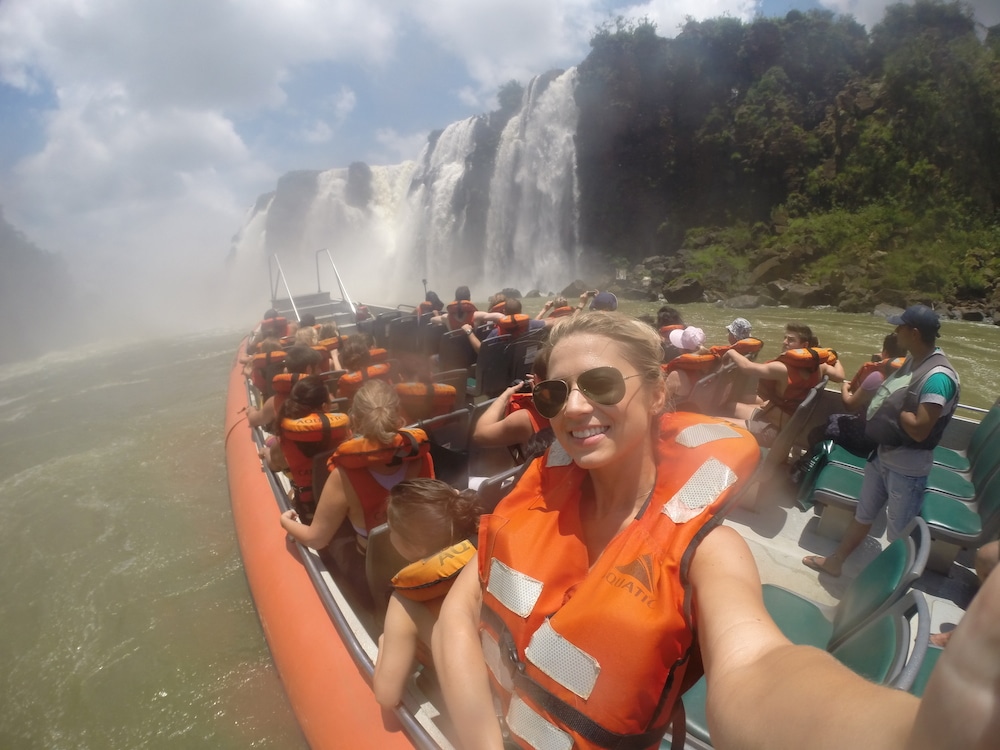
The Brazil Side: Cataratas do Iguaçu
In my opinion, the Brazil side kinda got the shaft in Iguazú with only 20% of the falls and a .75 mile long walkway on this side. What they lack in falls, they make up for in excursions. An option to see the falls from the air presented itself, and I’d have been a fool to turn it down, or perhaps I was a fool to pay the fee. At $100 for about 10 minutes, this ride is quite $$$, but well worth the money. When are you heading back to Iguazú in your lifetime? That’s what I thought. Unless you take a helicopter, it’s impossible to see the entire 1.7 mile stretch of cliffs where the Iguazú River crashes 270 feet down into the Paraná River below. Pay the money for the aerial view.
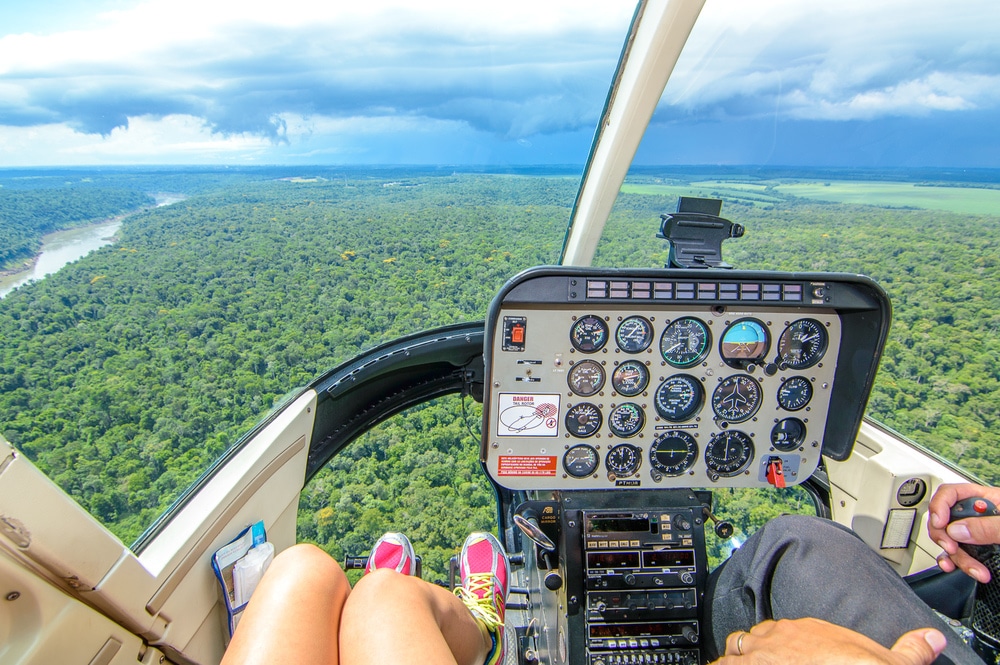
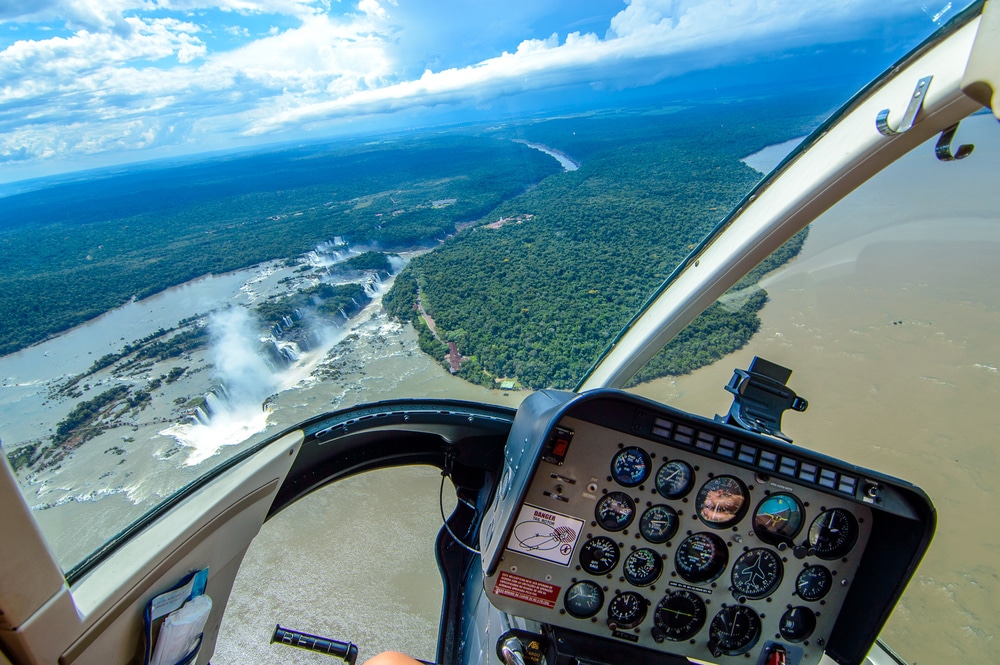
Brazil offers more of a panoramic view of the falls than Argentina, but the most spectacular feature on this side came right at the end: a viewing platform right in the Devil’s Throat. This is the most impressive part of the falls with a U-shaped chasm where 14 falls plunge more than 250 feet. A walkway brings you over the river along this massive wall of water that crashes down right next to you, once again doubling as a water park. Many people adorned ponchos, so if you want photos of yourself in plastic bags, go for it. Or stay dry on this lovely deck.
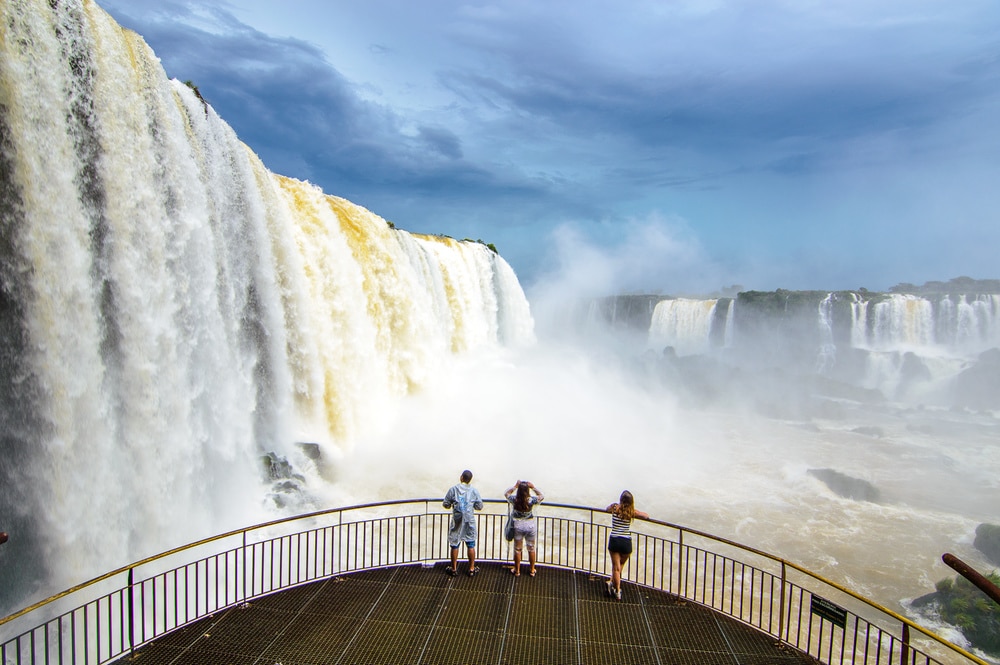
How To Plan A Visit
- While I wouldn’t suggest seeing both sides of the falls in one day, it can be done. I would recommend one night in Iguazú Falls, and spending just a few hours on either side during different days OR one night on each side of the falls.
- Weather is iffy here as the area experiences a humid subtropical climate with abundant rain and high temps year round.
- Entrance fee into the Argentina side: 215 ARS (Argentine pesos); Entrance fee into the Brazil side: 170 ARS (you can also pay in USD or BRL); Boat ride into the falls: 270 ARS.
- Seeing the falls isn’t exactly on the way to any destination. It’s out of the way and requires a commitment (unless your traveling through Paraguay, and many people aren’t).
- Flights from Buenos Aires into the Argentine Cataratas del Iguazú International Airport (IGR) are around $250-300. You may also fly into the Brazilian Foz do Iguaçu International Airport (IGU).
- Don’t forget you must have an Argentina reciprocity fee in order to gain entry into Argentina and a Brazil visa to gain entry into Brazil (if you’re an American passport holder).
- I’d suggest staying inside the national park at either the Sheraton on the Argentina side or the Belmond Hotel das Cataratas in Brazil. Both are mere feet from the falls.

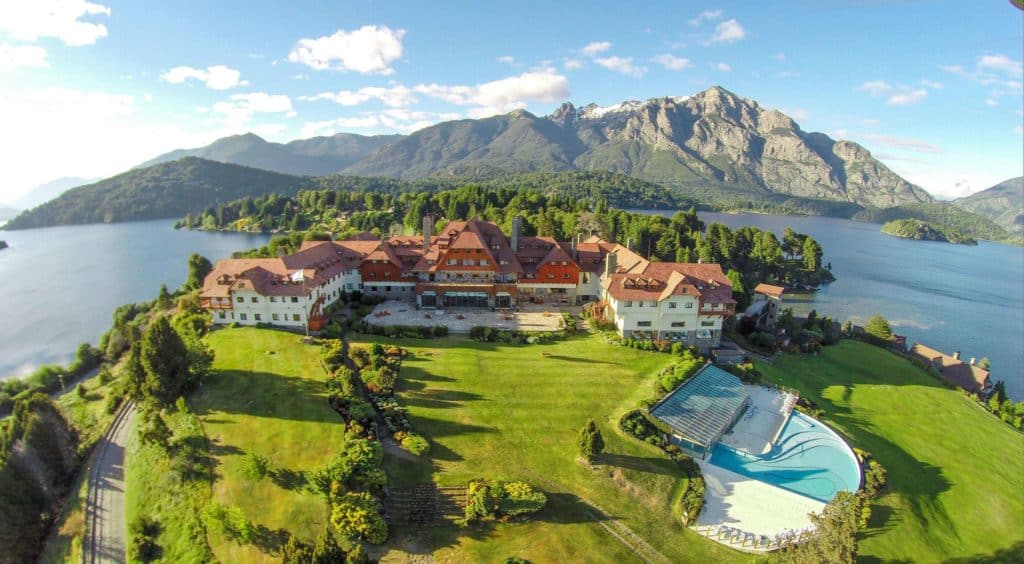
Leave a Reply